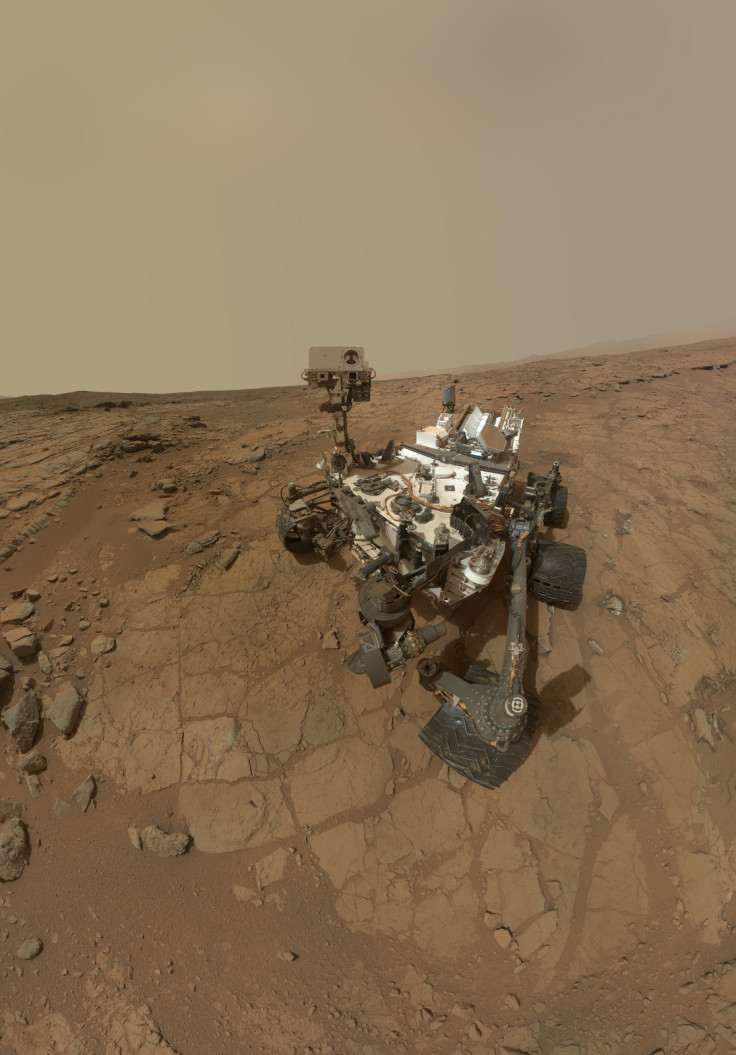Mars: The argument for life on planet gets boost from two studies

Presence of nitrogen in Martian soil samples and a demonstration of how abundant carbon monoxide in Martian atmosphere could be utilised by organisms to generate energy, seem to boost the argument of life on the planet in the recent past.
Significant concentrations of nitrate in soil and rock samples examined by Curiosity rover, points to the presence of nitrogen in ancient Mars, says a study.
Nitrogen is a critical component of amino acids and biomolecules that make life on Earth possible, but cannot be availed directly from the air by life forms. It has to be fixed into the reactive form of nitrates.
While the samples were collected at three different spots near rover's landing site — Rocknest, John Klein and Cumberland, the soil samples from the two latter sites had led scientists earlier to conclude that billions of years ago, the area was part of a potentially life-supporting lake-and-stream system.
The discovery of fixed nitrogen adds to that conclusion.
Another study suggests that atmospheric carbon monoxide was a feasible energy source for microbes on the planet, reports Space.com.
Both papers are published in the journal Proceedings of the National Academy of Sciences (PNAS).
"It's more support for this environment that would have had the ingredients that life would have needed," said Jennifer Stern of Nasa's Goddard Space Flight Center in Greenbelt, Maryland, lead author of the nitrogen study.
Stern and her team reported measurements made by the Sample Analysis at Mars (SAM) instrument aboard Nasa's rover Curiosity.
Curiosity's discovery isn't foolproof evidence of Martian life as nitrogen-nitrogen bonds can also be broken by the thermal shocks caused by lightning and asteroid or comet impacts.
It may have been generated billion years ago when Mars and other bodies in the inner solar system were bombarded by objects, Stern said.
However, there are chances the nitrogen was fixed on modern Mars.
In 2005, Europe's Mars Express orbiter detected nitrogen oxide (NO) high in the Red Planet's atmosphere.
It could have formed after sunlight split apart oxygen, carbon dioxide and molecular nitrogen.
"This suggests that N is currently being fixed in the Martian thermosphere, although it is unknown how much, if any, is transported to the lower atmosphere and surface," the researchers wrote in their PNAS paper.
A more detailed data covering nitrogen isotope would be required to compare the nitrate signatures from modern and primordial atmosphere to say conclusively e origin of the nitrogen.
Colonising Mars
The other paper from Louisiana State University suggests that carbon monoxide (CO) that could have served as an energy source on ancient Mars could also play a role in future human colonisation of the planet.
The CO toxic to many organisms can generate energy when oxidized by organisms into carbon dioxide (CO2).
But where the Earth's atmosphere is just 0.3 parts per million (ppm) or so CO by volume, the Martian atmosphere, in comparison, contains 800 ppm CO currently, and concentrations of the stuff may have been much higher in the past.
Gary King subjected Earth microbes to modern Martian surface conditions of low pressure, high CO2 concentrations (CO2 makes up 95% of the Red Planet's atmosphere), low oxygen levels and low to moderate temperatures, among other characteristics to study their ability to oxidize CO.
King specifically targeted the conditions that might prevail at features known as recurring slope lineae (RSL), seasonal dark streaks that have been observed by Nasa's Mars Reconnaissance Orbiter in a number of locales.
He found that soil samples collected in three different salty systems on Earth — the Big Island of Hawaii, Chile's Atacama Desert and the Bonneville Salt Flats in Utah — did indeed take up CO under RSL conditions.
King believes CO-oxidizing organisms such as A. ehrlichii MLHE-1 could be part of an effort to transform the Red Planet into a place more hospitable to humans.
© Copyright IBTimes 2024. All rights reserved.





